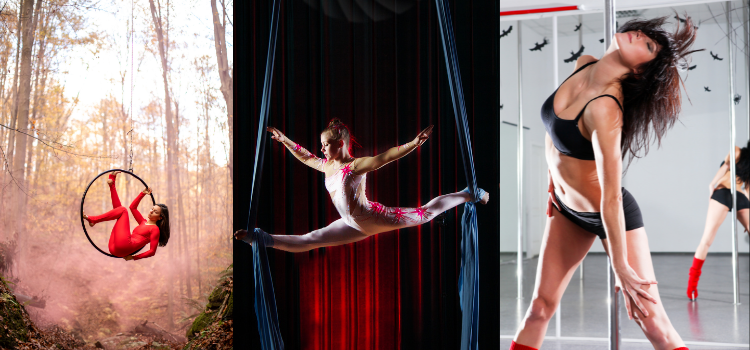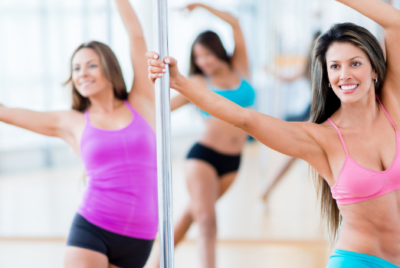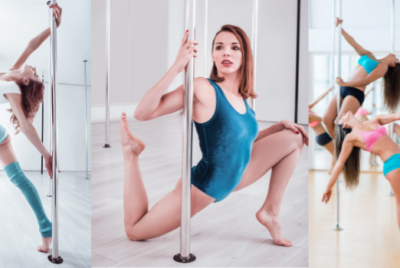Pole Dancing and Aerial Arts: Similarities and Differences
Introduction
As an enthusiast and advisor in the world of pole dancing, I am often asked about the connection between pole dancing and aerial arts. Both these disciplines share a close bond, rooted in strength, grace, and artistic expression. In this article, we will explore the similarities and differences between pole dancing and aerial arts, along with suggestions on how to combine these practices to enhance your skills and enjoy a well-rounded training experience.
Similarities between Pole Dancing and Aerial Arts
Physical demands and fitness benefits: Both pole and aerial dance require a high level of physical fitness. Both disciplines build strength, endurance, and flexibility. Engaging in either practice can contribute to improved cardiovascular health, increased muscle tone, and enhanced body awareness.
Use of strength, flexibility, and body control: Whether you’re suspended from a hoop or gripping a pole, both demand exceptional upper body and core strength. In addition, flexibility plays a crucial role in executing fluid and beautiful movements in both disciplines. Developing body control and spatial awareness is key to mastering advanced tricks and transitions.
Artistic expression and creativity: Both art forms provide a platform for artistic expression, and both disciplines offer opportunities to explore movement, musicality, and storytelling through choreography. Whether you prefer the sensuality and fluidity of pole dancing or the aerial grace of silks or trapeze, these practices allow for personal expression and creativity.
Differences between Pole Dancing and Aerial Arts
Apparatus and equipment used: Pole dancing primarily involves a vertical pole, whereas aerial arts encompass various apparatuses such as silks, lyra (hoop), trapeze, and rope. Each apparatus presents unique challenges and requires specific techniques to navigate and manipulate.
Techniques and movements unique to each discipline: While some movements may overlap between the two art forms, each discipline has its own distinct set of techniques and skills. Pole dancing includes spins, inversions, and dynamic tricks utilising the pole. Aerial arts incorporate climbs, wraps, drops, and intricate transitions performed on different apparatuses.
Performance styles and contexts: Pole dancing often embraces sensual and expressive movements, drawing inspiration from dance styles like contemporary, ballet, and exotic dance. Aerial arts, on the other hand, encompass a wide range of performance styles, from elegant and graceful routines to high-energy acrobatic displays. Aerial arts are frequently seen in circus and theatrical productions.
Cross-Training and Skill Development
Engaging in both pole dancing and aerial arts offers several benefits for skill development and overall progress.
Benefits of cross-training: Cross-training between pole dancing and aerial arts allows you to develop a broader skill set. Learning movements and techniques from each discipline can enhance your versatility, strength, and creativity.
Enhanced skill development: Many movements and principles in pole dancing and aerial arts complement each other. For example, the upper body and core strength developed in pole dancing can greatly benefit your performance on aerial apparatuses. Similarly, aerial arts can enhance your body awareness and spatial control, which can be applied to pole dancing.
Suggestions for integrating both practices: Consider incorporating elements from pole dancing and aerial arts into your training routines. You can alternate days dedicated to each discipline or dedicate specific training sessions to focus on transitions and movements that combine both practices. Experiment with fusion routines that seamlessly blend pole and aerial movements to create unique and captivating performances.
Community and Support
Both pole dancing and aerial arts offer a vibrant and supportive community that encourages growth and inclusivity.
Building a supportive community: Engage with local studios, attend workshops, and connect with fellow enthusiasts to build a strong support network. Participating in events and competitions within the respective communities can provide opportunities for growth and collaboration.
Shared experiences and challenges: Many practitioners of pole dancing and aerial arts face similar challenges, from mastering difficult moves to overcoming self-doubt. Sharing experiences and connecting with others who understand these challenges can provide invaluable motivation and encouragement.
Collaborations and performances: Embrace the opportunity to collaborate with artists from both pole dancing and aerial arts backgrounds. Joint performances and collaborations can create captivating and memorable experiences for both performers and audiences.
Overcoming Stereotypes and Misconceptions
Pole dancing especially has faced stereotypes and misconceptions that undermine the athleticism and artistry involved.
Addressing the stigma: Educate others about the physical demands and artistic expression inherent in both art forms. Challenge preconceived notions by highlighting the strength, skill, and dedication required to excel in these disciplines.
Promoting inclusivity and diversity: Emphasise that both disciplines are for everyone, regardless of gender, age, or body type. Encourage and support a diverse range of practitioners to foster an inclusive and welcoming community.
Emphasising the athleticism and artistry: Showcase the incredible athleticism and artistry found in both of these beautiful art forms. Highlight the intricate movements, physical control, and emotional expression that go into creating captivating performances.
Conclusion
The connection between pole dancing and aerial arts is rooted in the shared physical demands, artistic expression, and supportive communities they offer. By embracing the similarities and differences between these disciplines, practitioners can enhance their skills, challenge themselves creatively, and find a sense of belonging within a vibrant and inclusive community.
FAQs
Q1: Are these two dance art forms only for women?
A1: Absolutely not! Both disciplines can be enjoyed by anyone, regardless of gender. Many studios and communities actively promote inclusivity and welcome individuals of all genders.
Q2: Can I start pole dancing or aerial arts if I’m not very fit?
A2: Absolutely! Both are excellent forms of exercise and can help you improve your fitness levels over time. Beginners are always welcome, and instructors can guide you through progressions and modifications based on your current fitness level.
Q3: Are there any age restrictions for practising these disciplines?
A3: Age restrictions vary between studios and classes. Some studios offer specialised classes for children, while others focus on adult participants. It’s best to check with local studios to find classes suitable for your age group.
Q4: Can I do pole dancing or aerial arts if I have a fear of heights?
A4: While both art forms involve being off the ground, practitioners gradually build confidence and overcome their fear of heights through a progressive training approach. Instructors prioritise safety and provide spotting techniques to ensure a supportive learning environment.
Q5: How long does it take to become proficient in pole dancing or aerial arts?
A5: The time it takes to become proficient in either discipline varies depending on individual dedication, practice frequency, and previous experience in related disciplines. With consistent practice and guidance from experienced instructors, progress can be achieved at a pace that suits each individual.




